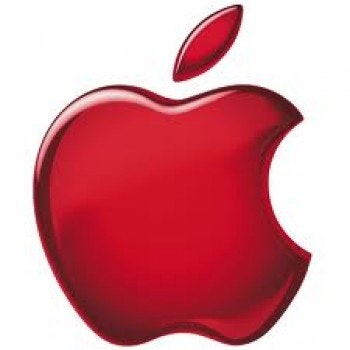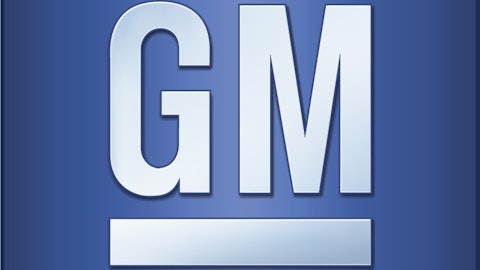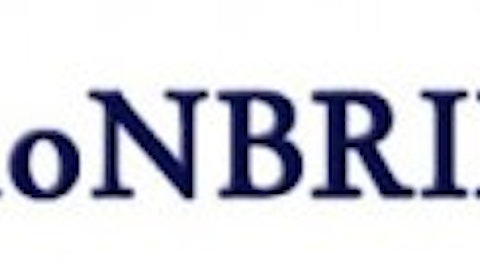3D printing may have the greatest disruptive potential of a new product in years, just like Apple.
Apple Inc. (NASDAQ:AAPL) is by many counts one of the most successful brands of all time. After dark days during the 90s Apple re-emerged to pioneer new products like smartphones. The name of its founder Steve Jobs will probably go down in history alongside the likes of Wright and Ford as paragons of American ingenuity.
Read more from Kapitall Wire: 3D Printing Still Going Strong: 7 Stocks to Watch
What is more, the company’s technologies have always been disruptive. Whether by putting computers into the home or directly into your hand – Apple has always had a knack for creating new markets.

With that in mind, we decided to look to the story of Apple’s ascendance for clues to the future of 3D printing stocks. Are any of the still relatively unknown companies in 3D printing are on track to become a household name? After all, it took a rare combination of technical savvy and investing prowess to separate Apple from a pack, where it was often outpaced by bigger sales at companies like Commodore and Tandy. We considered four axioms of Apple’s success.
Educate the public about your new product. Say what you will about Steve Jobs, but he was not really a hardware guy, at least at the outset. As the story goes, it was his early partner Steve Wozniak that was the brains behind the Apple 1, the circuit-board basis for the first home computer. Jobs also wasn’t successful at selling his idea to bigger companies – like executives from IBM and Xerox – who both scoffed at the usefulness of a personal computer. Apple’s own employees were still using typewriters as late as 1980.
A “disruptive” product needs to be explained to the public, and Apple undertook an exhaustive campaign to make sure they were doing just that. In an approach that combined instructive print advertisements, tongue-in-cheek wit, and carefully written instruction manuals, Apple successfully made a case to the public that normal people could use computers to heighten productivity and minimize busy-work.
For several reasons, 3D Systems Corporation (NYSE:DDD), may be ahead on this front. Its clever ticker and ubiquity on YouTube thanks to a special spot on National Geographic, give it an edge in terms of visibility with the public – heightening anticipation for 3D printers in the home.
Don’t fear partnerships with bigger companies. If you can’t get a larger company to buy you outright – you can still explore other kinds partnerships – such as when Jobs offered executives at Xerox Corporation (NYSE:XRX) cheap stock in exchange for permission to view their new graphics technology. Jobs was convinced that their interface, which used graphically designed representations for folders and applications, was the future. It was.
Stratasys, Ltd. (NASDAQ:SSYS) recently severed a partnership with Hewlett-Packard Company (NYSE:HPQ) after collaborating on a Design Jet 3D printer. Stratasys’ stock has soared since, in no small part due to an upgrade from Credit Suisse, a sign that finance is paying more attention to the industry as a whole.
Making history is cool, but not as cool to investors as making history by making money. Apple had what could probably be referred to as the most successful IPO in American history. It raised more capital than any other offering besides Ford Motor Company (NYSE:F), and made more instant millionaires than any offering at all. Jobs was featured on the cover of all the major financial magazines that year – from Fortune to Time – further boosting Apple’s notoriety. It didn’t seem to matter that many of those profiles also contained negative assessments of some Apple products, including its word processing, which Fortune dubbed “slow” and “clumsy.”
Don’t try to compete in two markets at once. Apple never succeeded in its bids to siphon off market share from business supplies giants like International Business Machines Corp. (NYSE:IBM), typically kept pace with Apple’s innovation despite being slower to recognize the potential of PCs. Microsoft Corporation (NASDAQ:MSFT) Office Suite is still the industry standard, and Apple was forced to shift its focus toward consumer electronics like iPods and tablets to remain relevant during the late 2000s. 3D printing stocks are relevant to a number of different markets (arguably most of them), but firms will have to remain focused if they hope to compete with the more established names like Autodesk, Inc. (NASDAQ:ADSK) that have much more to spend on R&D and advertising.
Do you agree with our run-down of Apple’s ascendance? Will some of these companies utilizing 3D printing successfully disrupt the market?
Click on the interactive chart below to see data over time.
Which 3D printers have the smartest strategy? Comment, and use the list below as a starting point for your own research.





